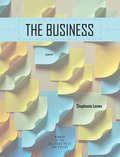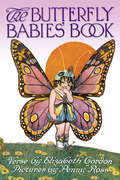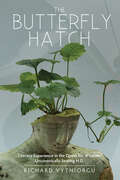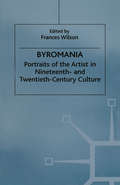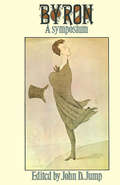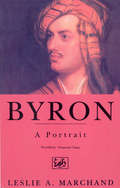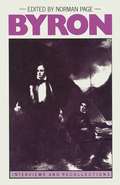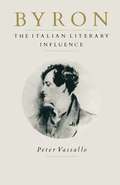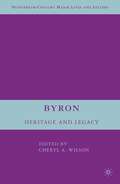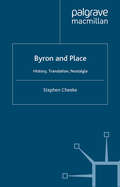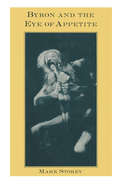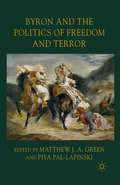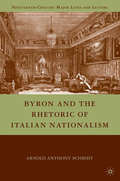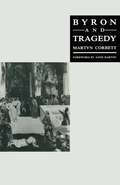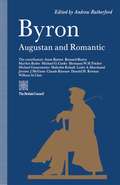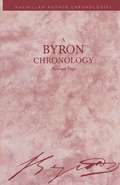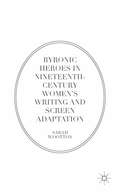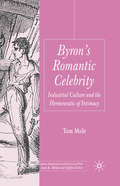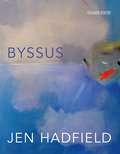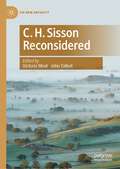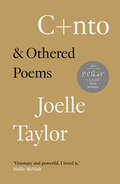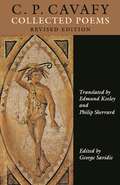- Table View
- List View
The Business (Colorado Prize for Poetry)
by Stephanie LenoxPublished by the Center for Literary Publishing at Colorado State University Winner of the 2015 Colorado Prize for Poetry What does it mean to work in the age of the cubicle? The Business takes on the modern workplace with sharp-witted poems that sting like a paper cut. A former secretary, Stephanie Lenox positions herself as a poetic note-taker of the mundane. Organized by the classical components of Greek tragedy, these poems enact the relationships, heartbreaks, and small heroic efforts that make up our working lives. Think there's nothing poetic about annoying coworkers, endless meetings, and stained coffee mugs? Think again. While tragedy provides the organizational structure for this collection, humor plays a central role. This collection transforms office politics and paper clips into a funny and critical examination of the mortal rat race. If you've ever been fired, let go, unemployed, underemployed, or overlooked, these poems are for you. Begun on stolen reams of printer paper, this book reclaims the hours of our lives we give, out of necessity, to others in order to survive.
The Butterfly Babies' Book
by Elizabeth GordonTo Mrs. Nettle, rough but kind,Red Admirals leave their babes to mind,And spend the golden summer hoursAmong the lovely garden flowers.Beautiful full-color illustrations and amusing verses recapture the magic and wonder of butterflies in this antique book from 1914. All of the baby butterfly characters are based on real species, and the text cites their common and scientific names and identifies the flowers and trees where they find food and shelter.
The Butterfly Hatch: Literary Experience in the Quest for Wisdom: Uncanonically Seating H.D.
by Richard VytniorguSome of H.D.s most oft-quoted lines have to do with the meaning and value of words; they are conditioned to hatch butterflies. Yet rather than seeking merely to understand how H.D. represented the meaning and value of words, this volume uses the butterfly hatch as a metaphor for thinking more broadly about the capacity of literary experience to hatch transformed persons butterflies in quest of wisdom in university English studies. Dislodging H.D. from her usual modernist context, this book positions her as a thinker and reads her autobiographical prose and recently published work of the 1940s for its ability to offer new insights into such pertinent and interconnected areas as literary contexts, imagination, and personal and social transformation. H.D. has, in her own words, always been uncanonically seated, resistant to rigid classification; the texture of her work celebrates internal, existential resonances that evidence the emergence of personality. The author capitalizes on this facet of H.D.s work and uncanonically seats her in conversation with the neglected literary theorist, Louise Rosenblatt (19042005), whose transactional contribution uniquely fuses critical theory, politics, philosophy, and educational vision. This book synthesizes the work of H.D. and Rosenblatt to create an emergent personalist theory of literary experience in the quest for wisdom, crystallizing links between philosophical anthropology, aesthetics, pedagogy, and the politics of human relations. Benefiting from access to unpublished material housed at Columbia, New York, and Yale universities, Vytniorgu combines analysis and theorizing to offer a significant, pedagogically-inflected intervention in literary studies, arguing that university English studies must incorporate critical and pedagogical vantages which open a window on wisdom as well as knowledge.
The Butterfly Hatch: Literary Experience in the Quest for Wisdom: Uncanonically Seating H.D.
by Richard VytniorguSome of H.D.s most oft-quoted lines have to do with the meaning and value of words; they are conditioned to hatch butterflies. Yet rather than seeking merely to understand how H.D. represented the meaning and value of words, this volume uses the butterfly hatch as a metaphor for thinking more broadly about the capacity of literary experience to hatch transformed persons butterflies in quest of wisdom in university English studies. Dislodging H.D. from her usual modernist context, this book positions her as a thinker and reads her autobiographical prose and recently published work of the 1940s for its ability to offer new insights into such pertinent and interconnected areas as literary contexts, imagination, and personal and social transformation. H.D. has, in her own words, always been uncanonically seated, resistant to rigid classification; the texture of her work celebrates internal, existential resonances that evidence the emergence of personality. The author capitalizes on this facet of H.D.s work and uncanonically seats her in conversation with the neglected literary theorist, Louise Rosenblatt (19042005), whose transactional contribution uniquely fuses critical theory, politics, philosophy, and educational vision. This book synthesizes the work of H.D. and Rosenblatt to create an emergent personalist theory of literary experience in the quest for wisdom, crystallizing links between philosophical anthropology, aesthetics, pedagogy, and the politics of human relations. Benefiting from access to unpublished material housed at Columbia, New York, and Yale universities, Vytniorgu combines analysis and theorizing to offer a significant, pedagogically-inflected intervention in literary studies, arguing that university English studies must incorporate critical and pedagogical vantages which open a window on wisdom as well as knowledge.
Byromania: Portraits of the Artist in Nineteenth- and Twentieth-Century Culture
by Frances WilsonThis collection of essays by leading Byronists explores the development of the myth of Byron and the Byronic from the poet's self-representations to his various appearances in nineteenth- and twentieth-century literature and in drama, film and portraiture. Byromania (as Annabella Milbanke named the frenzied reaction to Byron's poetry and personality) looks at the phenomena of Byronism through a variety of critical perspectives, and it is designed to appeal to both an academic and a popular readership alike.
Byron: A Portrait (Byron's Letters And Journals #Vol. Vi)
by Leslie MarchandIt is his clear-sightedness, his candour, his steely strength of will, the immediacy of his writing, his insolence and cynicism, his love of liberty, his hatred of hypocrisy, his originality, his rational enlightened toughness which attached Byron to the present age as much as to his own. Leslie Marchand's profound knowledge of his subject is unrivalled. His superb biography gives us an engrossing and utterly convincing portrait of a genius - a man who more than any other, fulfilled in his brillance, passion and creativity, the ideal of the Romantic Hero. One cannot but be won over by the sensitive, infinitely complex which Leslie Marchand uncovers. . . he gives us the essential Byron. . The spell of this strange, unquiet, blazingly honest and infinitely endearing man, is powerful ' Selina Hastings. Daily Telegraph
Byron: Heritage and Legacy (Nineteenth-Century Major Lives and Letters)
by C. WilsonThis exciting collection represents a range of scholarly approaches and include close textual study, comparative readings, and broad cultural analysis. Contributors to this collection include Bernard Beatty, Peter Cochran, Marilyn Gaull, Charles E. Robinson, Andrew Stauffer, and Timothy Webb.
Byron and John Murray: A Poet and His Publisher (Liverpool English Texts and Studies #64)
by Mary O'ConnellByron and John Murray: A Poet and His Publisher is the first comprehensive account of the relationship between Byron and the man who published his poetry for over ten years. It is commonly seen as a paradox of Byron’s literary career that the liberal poet was published by a conservative publishing house. It is less of a paradox when, as this book illustrates, we see John Murray as a competitive, innovative publisher who understood how to deal with his most famous author. The book begins by charting the early years of Murray’s success prior to the publication of Childe Harold’s Pilgrimage, and describes Byron’s early engagement with the literary marketplace. The book describes in detail how Byron became one of Murray’s authors, before documenting the success of their commercial association and the eventual and protracted disintegration of their relationship. Byron wrote more letters to John Murray than anyone else and their correspondence represents a fascinating dialogue on the nature of Byron’s poetry, and particularly the nature of his fame. It is the central argument of this book that Byron’s ambivalent attitude towards professional writing and popular literature can be illuminated through an understanding of his relationship with John Murray.
Byron and Place: History, Translation, Nostalgia
by S. CheekeThis new study of Byron explores the 'geo-historical' - places where historically significant events have occurred. Cheeke examines the ways in which the notion of being there becomes the central claim and shaping force in Byron's poetry up to 1818. He goes on to explore the concept of being in-between which characterises Byron's 1818-21 poetry. Finally, Byron's complex nostalgia for England, his sense of having been there , is read in relation to a broader critique of memory, home-sickness and place-attachment.
Byron and the Politics of Freedom and Terror
by Piya Pal-LapinskiThis interdisciplinary collection explores the divergence or convergence of freedom and terror in a range of Byron's works. Challenging the binary opposition of historicism and critical theory, it combines topical debates in a manner that is sensitive both to the circumstances of their emergence and to their relevance for the twenty-first century.
Byron and the Rhetoric of Italian Nationalism (Nineteenth-Century Major Lives and Letters)
by A. SchmidtMaking extensive use of untranslated texts, Arnold Schmidt discusses the impact of Byron's life and works on the discourse of Italian nationalism between 1818 and 1948, his participation in Grand Tour and salon culture, and his influence on Italian Classicists and Romantics.
Byron in Geneva: That Summer of 1816
by David EllisIn 1816, following the scandalous collapse of his marriage, Lord Byron left England forever. His first destination was the Villa Diodati by Lake Geneva where he stayed together with Percy Bysshe Shelley, Mary Godwin, Claire Clairmont and John Polidori. Byron in Geneva focuses sharply on the poet’s life in the summer of that year, a famous time for meteorologists (for whom 1816 is the year without a summer), but also that crucial moment in the development of his writing when, urged on by Shelley, Byron tried to transform himself into a Romantic poet of the Wordsworthian variety. The book gives a vivid impression of what Byron thought and felt in these few months after the breakdown of his marriage, but also explores the different aspects of his nature that emerge in contact with a remarkable cast of supporting characters, which also included Madame de Staël, who presided over a famous salon in Coppet, across the lake from Geneva, and Matthew Lewis, author of the splendidly erotic `Gothic’ best-seller, The Monk. David Ellis sets out to challenge recent damning studies of Byron and through his meticulous exploration of the private and public life of the poet at this pivotal moment, he reasserts the value of Byron’s wit, warm-heartedness, and hatred of cant.
Byronic Heroes in Nineteenth-Century Women’s Writing and Screen Adaptation
by Sarah WoottonByronic Heroes in Nineteenth-Century Women's Writing and Screen Adaptation charts a new chapter in the changing fortunes of a unique cultural phenomenon. This book examines the afterlives of the Byronic hero through the work of nineteenth-century women writers and screen adaptations of their fiction. It is a timely reassessment of Byron's enduring legacy during the nineteenth century and beyond, focusing on the charged and unstable literary dialogues between Jane Austen, Elizabeth Gaskell, George Eliot and a Romantic icon whose presence takes centre stage in recent screen adaptations of their most celebrated novels. The broad interdisciplinary lens employed in this book concentrates on the conflicted rewritings of Byron's poetry, his 'heroic' protagonists, and the cult of Byronism in nineteenth-century novels from Pride and Prejudice to Middlemarch, and extends outwards to the reappearance of Byronic heroes on film and in television series over the last two decades.
Byron's Romantic Celebrity: Industrial Culture and the Hermeneutic of Intimacy (Palgrave Studies in the Enlightenment, Romanticism and Cultures of Print)
by T. MoleThis book offers a new history and theory of modern celebrity. It argues that celebrity is a cultural apparatus that emerged in response to the Romantic industrialization of print and culture. It investigates the often strained interactions of artistic endeavour and commercial enterprise, and the place of celebrity culture in history of the self.
Byssus
by Jen HadfieldByssus is Jen Hadfield's third collection, and her first after the T.S. Eliot prize-winning Nigh-No-Place. Byssus - pronounced 'bissus', and meaning the mussel's 'beard', the tough fibres which anchor it to the seabed - is a book first and foremost about home, and what it takes to find and forge one: amongst friends, alert to mortality, to love and to landscape. Her language, strongly rooted in the common names she finds in the sea, shore and moor of her adopted Shetland, has already been widely admired for its startling originality. Here, through poems of astonishment and adoration, through charms and fables, and ultimately through a practice of attention and careful honouring - she shows how speech itself can be an act of home-making. Byssus is a profound consideration of just what it means to get to know a place.
C. H. Sisson Reconsidered (The New Antiquity)
by John Talbot Victoria MoulThis book is the first collection of essays dedicated to the work of C. H. Sisson (1915-2003), a major English poet, critic and translator. The collection aims to offer an overall guide to his work for new readers, while also encouraging established readers of one aspect (such as his well-known classical translations) to explore others. It champions in particular the quality of his original poetry. The book brings together contributions from scholars and critics working in a wide range of fields, including classical reception, translation studies and early modern literature as well as modern English poetry, and concludes with a more personal essay on Sisson’s work by Michael Schmidt, his publisher.
C+nto: & Othered Poems
by Joelle Taylor‘Visionary and powerful. I loved it.’ Hollie McNish The female body is a political space.C+nto enters the private lives of women from the butch counterculture, telling the inside story of the protests they led in the ‘90s to reclaim their bodies as their own – their difficult balance between survival and self-expression. History, magic, rebellion, party and sermon vibrate through Joelle Taylor’s cantos to uncover these underground communities forged by women.Part-memoir and part-conjecture, Taylor explores sexuality and gender in poetry that is lyrical, expansive, imagistic, epic and intimate. C+nto is a love poem, a riot, a late night, and an honouring.
C.P. Cavafy: Collected Poems. - Revised Edition (The Lockert Library of Poetry in Translation #146)
by C. P. CavafyC. P. Cavafy (1863-1933) lived in relative obscurity in Alexandria, and a collected edition of his poems was not published until after his death. Now, however, he is regarded as the most important figure in twentieth-century Greek poetry, and his poems are considered among the most powerful in modern European literature. Here is an extensively revised edition of the acclaimed translations of Edmund Keeley and Philip Sherrard, which capture Cavafy's mixture of formal and idiomatic use of language and preserve the immediacy of his frank treatment of homosexual themes, his brilliant re-creation of history, and his astute political ironies. The resetting of the entire edition has permitted the translators to review each poem and to make alterations where appropriate. George Savidis has revised the notes according to his latest edition of the Greek text. About the first edition: "The best [English version] we are likely to see for some time."--James Merrill, The New York Review of Books "[Keeley and Sherrard] have managed the miracle of capturing this elusive, inimitable, unforgettable voice. It is the most haunting voice I know in modern poetry."--Walter Kaiser, The New Republic ?
